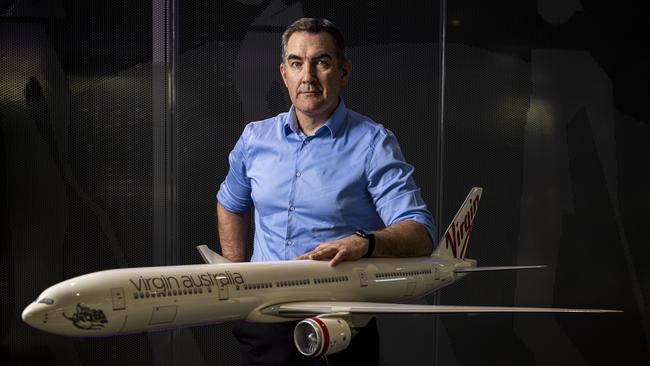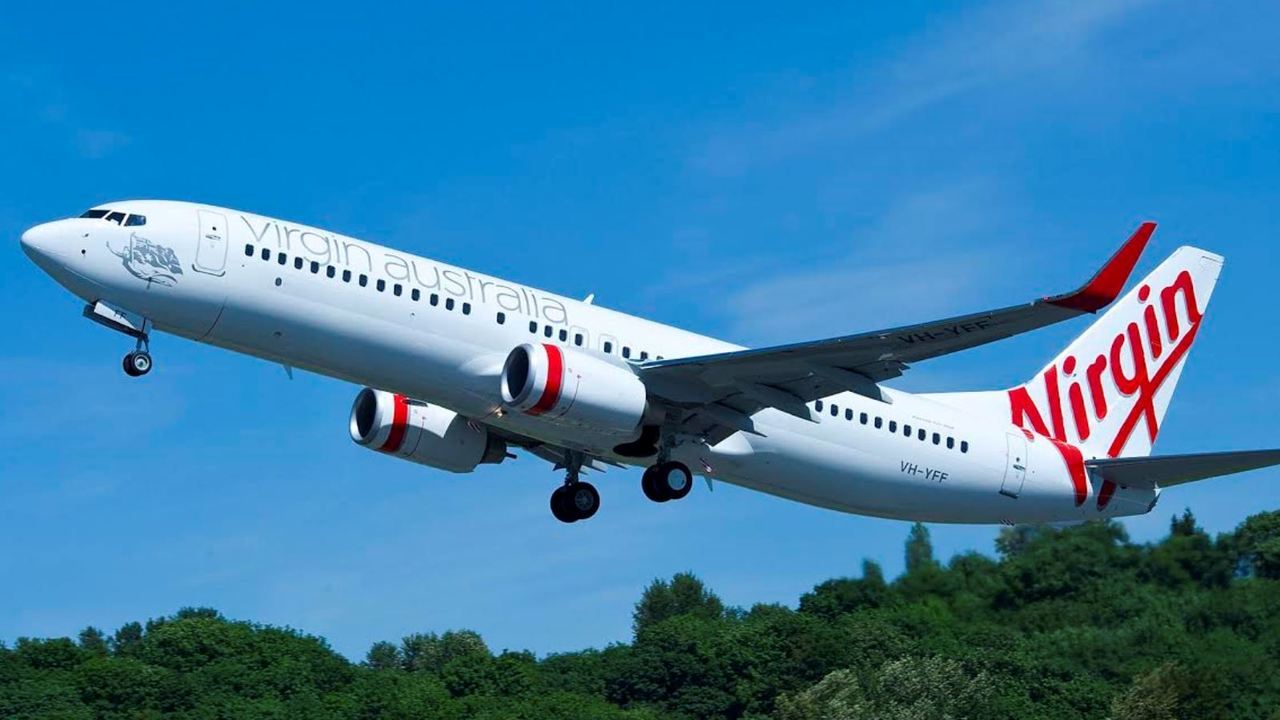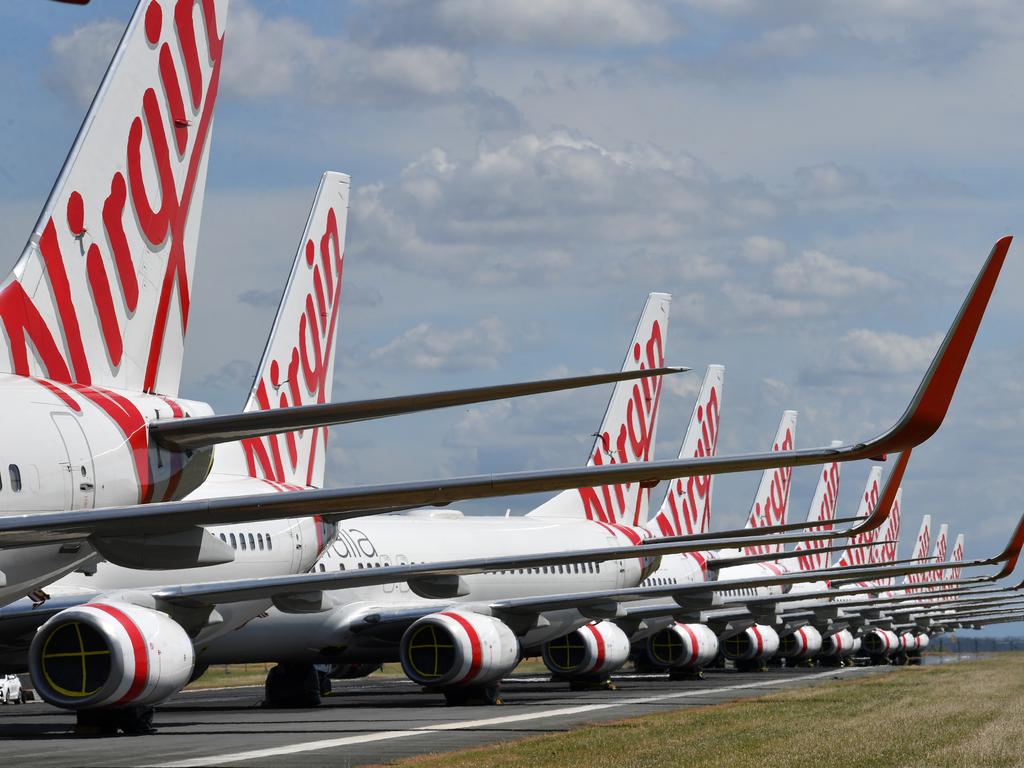
And at top of the list of candidates is the Qantas competitor Virgin.
On Wednesday my colleague Glenda Korporaal set out the case for rescuing Virgin and concluded that the main reason for rescuing Virgin was to provide competition for Qantas. She is right, competition is needed, but I think there is a better way of providing that competition than rescuing Virgin.
If Virgin fails – and hopefully it does not – then Australia has a low cost option of providing competition by restoring a scheme that the government canvassed but abandoned in the troubled times of the Ansett collapse.
The money saved could be used to help our major universities. As I explained on Wednesday major universities have been excluded from JobKeeper because, although they are non-profit organisations, they have been classified in the same category as corporate giants like BHP.
While it’s true that the main reason for Virgin’s financial mess is the COVID-19 airline contraction, the airline made a series of mistakes that contributed to its current situation.
I remember former Qantas CEO Geoff Dixon breathing a sigh of relief when Virgin took the financial package and sited in Brisbane. Twenty years ago, Melbourne was not the global city it has become and had lost both Ansett and the old TAA. At that time, Australia’s second largest city would have moved in behind Virgin had it sited in Melbourne. A few years later Dixon started Jetstar and based it in Melbourne.

Dixon’s plan was that he would sandwich Virgin between the low cost Jetstar and the full service Qantas. But Virgin found a way to prosper in that environment and Qantas had competition. Among Virgin’s shareholders there was great change leaving it with the current situation where major international airlines have minority stakes led by the Chinese HNA, owner of Hainan airlines; Etihad, Singapore Airlines and the Chinese Nanshan Group, majority owner of Qingdao airlines.
Flawed strategy
All global airlines are currently fighting for survival and clearly none of the Virgin minority shareholders are prepared to step up and rescue the company.
But those shareholders endorsed the strategy that saw Virgin set up luxury lounges in its attempt to break out of its discount position and take on Qantas as a full service airline. The strategy did not reap the hoped for rewards for three main reasons. Virgin was a discount brand and it’s very hard to change such an image in any market, but especially airlines.
Secondly it ran up against one of the best CEO’s in the country: Alan Joyce, who had been the first CEO of Jetstar. Joyce, with the backing of former chairman Leigh Clifford, turned Qantas into a much more efficient and cost-competitive airline. That made it a formidable competitor for Virgin to take on.
And finally, if Virgin was to challenge Qantas head on, it needed to do with extensive shareholder money. There were some equity injections, but there was too much debt in the exercise.
It’s important for the nation first that Qantas remain strong, but part of that strength will come from competition.
Yet for all Joyce’s work in transforming Qantas, if there is no competition, the airline will gradually become less competitive and prices will rise, particularly when Joyce retires.
And that’s Virgin’s argument for a rescue.
It’s important for the nation first that Qantas remain strong, but part of that strength will come from competition.
New player?
The old government contingency plan was that overseas airlines would be allowed restricted access to the domestic routes. And so, an overseas airline could land at an Australian destination and take domestic passengers to one or two other destinations. Carefully limited access to domestic routes would improve the attraction for overseas airlines to bring tourists to Australia. In 2021 and beyond we will need incentives get them flying here again.
Under the plan, competition can be monitored. If it’s too severe and Qantas is being damaged then access can be restricted.
Conversely, if Qantas starts to get too comfortable and prices rise too far then access to the domestic market can be increased.
Qantas opposed the idea with great vigour when it was canvassed and, understandably, they will oppose it again. But already, and not illogically, Alan Joyce is saying that if the government loans money to Virgin it should do the same thing for Qantas which has its own problems in the current environment.
The Qantas protest comes because the proposed ”Virgin rescue” does not accord with the normal rules of rescue packages where shareholders are wiped out and lenders take haircut.
Given there is an alternative way of providing competition for Qantas, the Virgin money is better spent helping universities.








Now that the basic JobKeeper rescue packages have passed through the parliament, much of the future attention of the government will be directed towards specific industry or corporate aid deals.